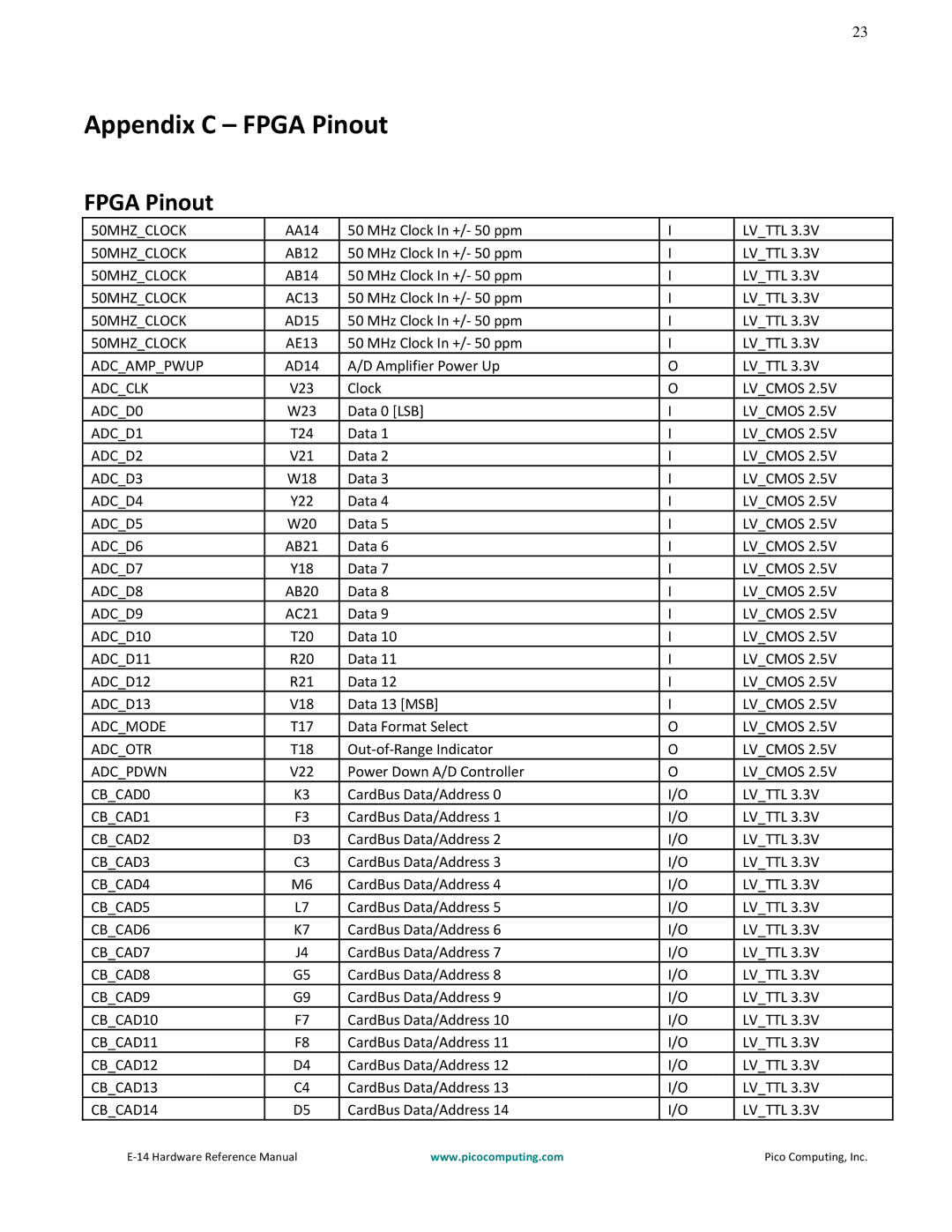E-14 specifications
Pico Communications E-14 is an advanced wireless communication device designed to meet the demands of modern connectivity. As a versatile solution, it serves various applications in sectors such as telecommunications, IoT, and smart cities. The E-14 stands out for its compact design, exceptional performance, and robust feature set that cater to both individual users and enterprises.One of the primary features of the Pico E-14 is its support for multiple communication protocols, including LTE, NB-IoT, and LoRaWAN. This multi-protocol capability ensures that users can select the most suitable option for their specific use case, whether it be high-speed data transfer or low-power wide-area networking. With seamless integration into existing infrastructure, the E-14 facilitates hassle-free deployments.
Power efficiency is another hallmark of the Pico E-14. Designed for longevity, the device includes intelligent power management features that drastically reduce energy consumption, making it an ideal choice for battery-operated devices and remote monitoring applications. This capability is particularly valuable in settings where maintenance access is limited, and downtime must be minimized.
The E-14’s built-in security features provide enhanced data protection, making it suitable for applications that require confidentiality and integrity. With end-to-end encryption, secure boot, and trusted platform modules, users can rest assured that their data remains protected against unauthorized access and cyber threats.
Moreover, the Pico E-14 boasts a user-friendly interface, which simplifies setup and operation. Its intuitive configuration tools allow users to quickly adjust settings and monitor performance metrics, reducing the need for specialized technical knowledge. This ease of use is a significant advantage in environments where teams may vary in technical expertise.
The device is also rugged and built to withstand harsh environmental conditions. Its robust casing protects against dust, moisture, and extreme temperatures, allowing it to function reliably in a variety of settings, from urban installations to remote field deployments.
With its array of features, the Pico Communications E-14 is well-positioned to play a pivotal role in the evolution of connectivity solutions. By offering flexible communication methods, energy efficiency, enhanced security, and user-friendly functionality, it addresses the complexities of modern communication needs while paving the way for innovative applications in the future.
